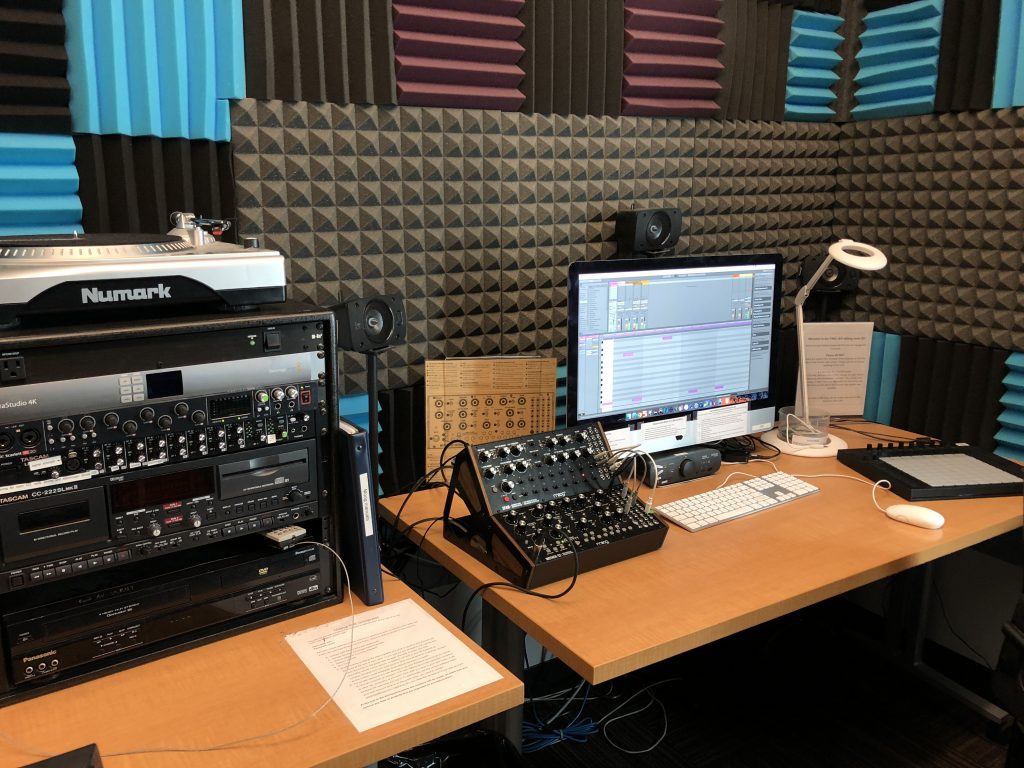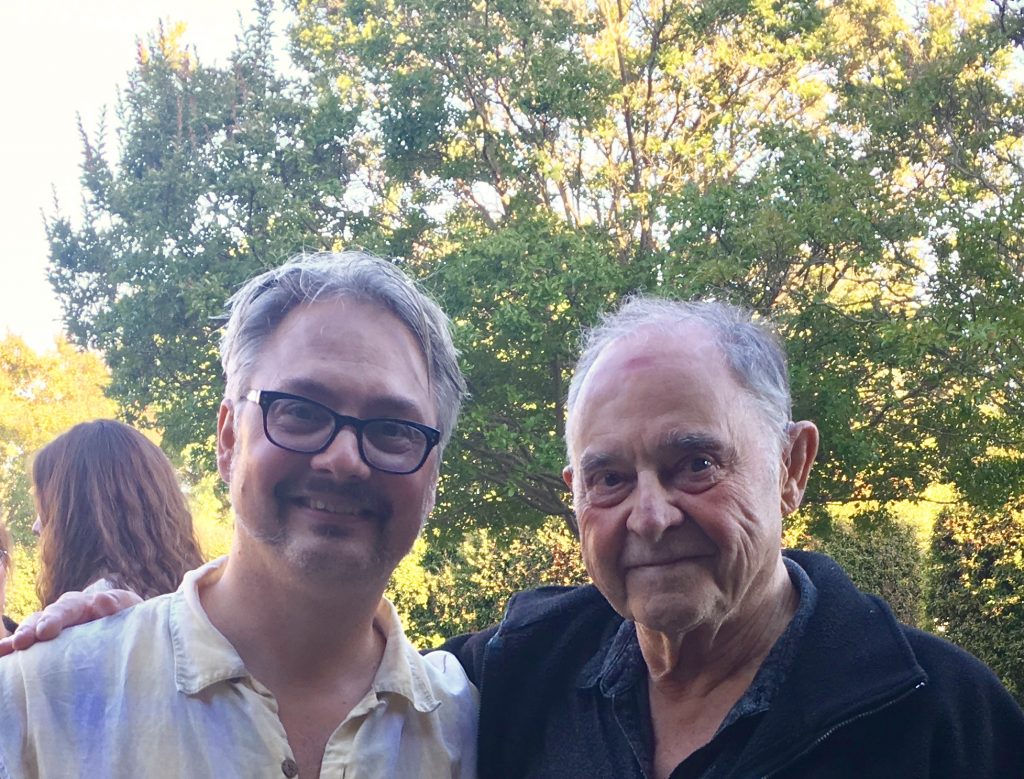The Performing Arts Resource Center (PARC) in the Performing Arts Building (PAB) has added two Moog analog synthesizers to our continually evolving A/V editing room 327!

The synthesizers in this room are semi-modular. Which means they work as is without patch cables, but they also can be patched to themselves or other synths to control each others parameters using CV (control voltage). CV is a variable voltage signal with can control a multitude of behaviors (pitch, tempo, filter cutoffs to name a few) by connecting one parameter to another through patch cables via the in/outs on a synthesizer.
The Moog (named after Bob Moog) concept of the synthesis of sound is based on filtering out harmonics, or rather subtracting from the sound. It is often called subtractive synthesis.
Another concept of sound synthesis is additive synthesis (Don Buchla was the major innovator in this area). Additive synthesis adds harmonics to the fundamental tone. Yet another is FM synthesis (created by John Chowning) which relies on the modulating the frequency of an oscillator’s waveform timbre (i.e. square, triangle, pulse etc).
Often subtractive synthesis is called “east coast” synthesis, and additive synthesis is called “west coast” synthesis which is based on the regions of the country the creators lived.
The interactive kinetic and variable (no two circuits are the same, AC current flows differ room to room, each users touch is different) nature of analog synths compared to the quantized mouse clicking of virtual “dials” is very appealing to making music and a nice alternative to soft synths. The way analog synths respond to twists and turns, the (often) lack of precise duplication and the responsiveness when creating “live” takes or creating a sequence via midi in a DAW by twisting knobs and flipping switches. Makes each synth a unique device and truly instruments unto themselves.
The synths can be free-styled and recorded into a DAW as is, independent of each other for projects that aren’t desired to be locked to tempo. They can also be locked to tempo with each other via a CV connection, or the Mother 32 can locked to a global tempo generated by a DAW via a midi connection.
I hope you enjoy discovering the joys of synthesizing sound using these analog synths. Experiment, twist knobs, start plugging in patch cables, make mistakes (are there mistakes?) and listen to what happens. Enjoy the mystery!
Come visit us at the PARC.
Joe Janiga
John Chowning and myself at Stanford last summer. What an honor it was to meet and talk with him!

